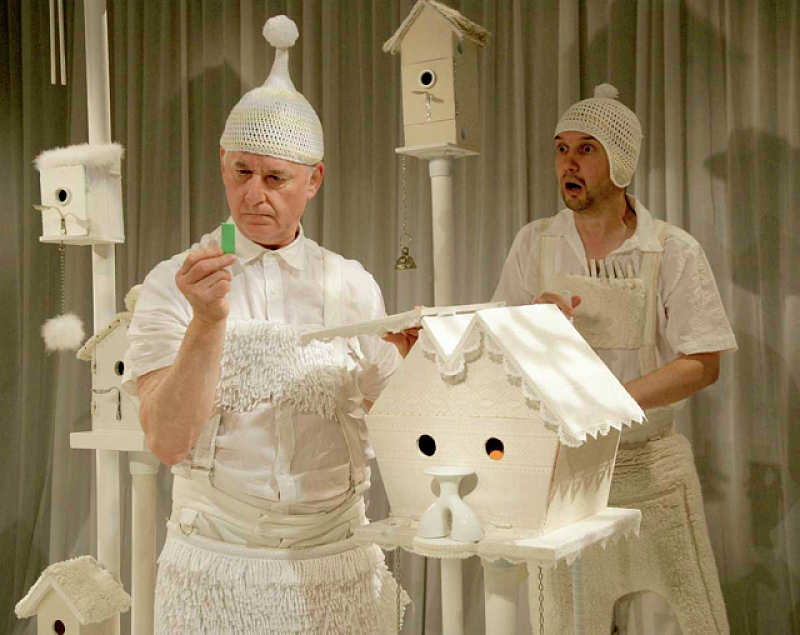We all have one: a “my first theatre experience” story. A large number of examples are tales of being taken to a musical, with a sizable subset describing performances specifically designed for young audiences. What these stories all have in common, though, is a powerful sense of place and time, a kind of multidimensional sense memory, that holds in amber the powerful fact: I was there while that was in front of me. Or perhaps that should be around me: As Miriam Laube, an extraordinary actor at the Oregon Shakespeare Festival who’s profiled in this month’s Role Call, recounted to me, she remembers seeing Man of La Mancha at Pennsylvania’s McKeesport Little Theater when she was 5. Though she couldn’t really follow the story, she said, “I remember the sensation of being inside the music. I didn’t know what was going on in the show, but I remember the feeling, the energy.” Put that way, it sounds like an embrace, and it’s easy to see how it can be a bonding moment—a fold in which one is made to feel welcome, and to which one powerfully longs to return.
That was the case with me; for the record, my gateway was Phoenix Little Theatre’s production of Oliver! when I was 7. And while it’s too soon to tell definitively, that seems to be what’s going on with my two sons, ages 6 and 3, who have already seen their share of theatre, large- and small-scale, from Cinderella and Aladdin to the intimate toddler-scaled stagings of Scotland’s Catherine Wheels, London’s Oily Cart, and Australia’s Windmill Theatre, imported to New York City by the invaluable New Victory Theater. I and they have also eagerly followed the work of Trusty Sidekick Theater Company and Acrobuffos, two New York–based companies the New Victory has supported; if we traveled more, we would certainly be checking out theatre everywhere from Imagination Stage in Bethesda, Md., to Childsplay in my Arizona backyard (founded a little too late, alas, to reach me in my impressionable years there).
This month’s special section, Theatre for Young Audiences: The Kids Are All Right, contains a series of stories exploring trends and practices among makers of work for young audiences. What emerges are not only powerful reminders of theatrical first principles—the things that make theatre theatre, like liveness and surprise, give and take, seem more intensely relevant in the face of roiling, unpredictable young audiences—but a sense of the high stakes of this work. There is now a solid body of research on the mental health benefits of theatre and role-playing, both for children whose neural architecture is still forming and for those whose neurological development requires attention, whether youngsters on the autism spectrum or oldsters with dementia. That’s why Peter C. Brosius, the visionary artistic director of Children’s Theatre Company in Minneapolis, once told me that he sees providing theatre, even for audiences so young that there’s little chance they’ll remember it, as a social justice imperative.
On that note, there’s a new white paper from the National Bureau of Economic Research (NBER) that aims to quantify the impact of “culturally relevant pedagogy,” defined as “instructional practices and content aligned with the cultural experiences of minority students.” The results are pretty staggering: The NBER study shows that assignment to an ethnic studies course “increased 9th-grade student attendance by 21 percentage points, GPA by 1.4 grade points, and credits earned by 23.” While this was a study about culture writ large, and in a pedogagical setting, there is no doubt that theatre—and more broadly, the fictional roles and tropes in which young people either see or don’t see themselves reflected—can be a powerful medium for learning, rehearsing, and projecting meaning about ourselves and the world. And when we feel ourselves made part of a piece of culture that wouldn’t exist without our presence—when we feel embraced, in short—it stands to reason that we’ll come back for more.


